Remember when it took us seven years to get a new The Last of Us game? Remember when there was even a question about whether or not we’d ever get a sequel to Naughty Dog’s post-apocalyptic action game because the ending was so intentionally ambiguous and thought-provoking? Now, it seems we can’t go a year without being reminded that Sony thinks as many people should experience this series as possible, while folks associated with the HBO adaptation praise the game in ways that border on the absurd. Now, we’re getting a remaster of The Last of Us Part II, and it feels like we’re reaching peak Last of Us fatigue.
Before anyone tries to paint this as the screed of a hater just looking to hate, let me say that The Last of Us and its sequel are two of my favorite games of all time. I’ve got art of Ellie and Abby hanging up in my apartment, and there’s a $US2000 replica of Ellie’s guitar from Part II sitting next to my bed. But even the biggest fans of something have to acknowledge that when a company is inundating the masses with that one thing over and over again without rest, it’s time to pump the brakes, and we have reached that point with The Last of Us.
Sony hasn’t let The Last of Us rest in a decade
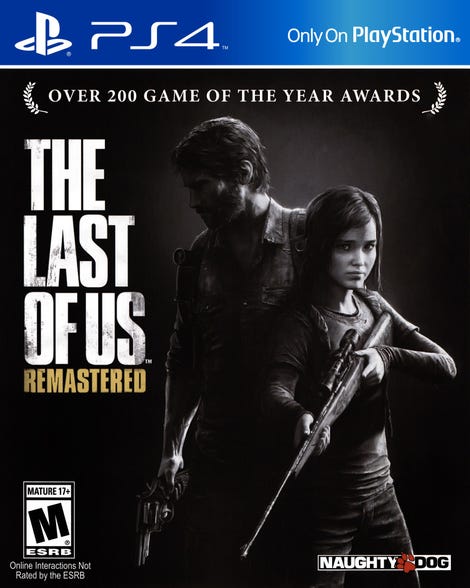
Let’s look at the timeline of The Last of Us marketing. The original game launched on PlayStation 3 in 2013 to near-universal acclaim. It won plenty of Game of the Year awards, catapulted co-directors Neil Druckmann and Bruce Straley and cast members Ashley Johnson and Troy Baker into household names (for gamers, anyway), and has more or less served as the blueprint for Sony’s games in the decade since. Even the Indiana Jones-esque adventure series Uncharted, whose upbeat, swashbuckling sensibilities originally made it a pretty stark foil for the moody, post-apocalyptic story of Joel and Ellie, took on a much more sombre tone in Uncharted 4 after The Last of Us’ success.
In 2014 we got the excellent Left Behind DLC, which focused on Ellie and fleshed out a crucial moment from her past, but Naughty Dog also released The Last of Us Remastered on PlayStation 4 a few months later. The $US50 package was slightly discounted, had a fair bit of extras packaged in, and ran at a smooth 60 frames per second. Even if it felt too soon, at the very least the PS4’s lack of backward compatibility, coupled with how many people made the jump to the PS4 without having owned a PS3, made it a reasonable prospect. But as the remaster launched, it was clear Sony wanted to make it an event, with the company gathering the cast and composer for a stage performance of some of the game’s most memorable scenes. The Last of Us had become a force that could drive cultural moments, and it was clear the game’s success had set the gears turning at Sony and Naughty Dog.
The sequel was announced at PlayStation Experience 2016. I was there, and even as someone who was sceptical of a sequel, I was a blubbering mess when I saw an aged-up Ellie on the big screen. In the years between reveal and release, Naughty Dog spun a web of marketing jargon to let people know this was going to be a game about hatred and cycles of violence, and was meant to be a stark departure from the original’s story of love between surrogate daughter and father. Unpacking that framing is its own article, and if you want to go down that rabbit hole, be my guest and be my guest Part II. But the point is we spent four years hearing The Last of Us Part II described as something that would deal with heavy, frankly miserable-sounding themes, and by the time the game actually launched, it was exhausting to unpack.
Come 2020, The Last of Us Part II had become such a minefield of vitriolic discourse that even those of us who had charitable reads on its tale of grief-driven violence quickly tired of talking about Ellie’s revenge tour in the months that followed. And yet, Naughty Dog and Sony have continued to push the franchise into the public consciousness without so much as taking a breath.
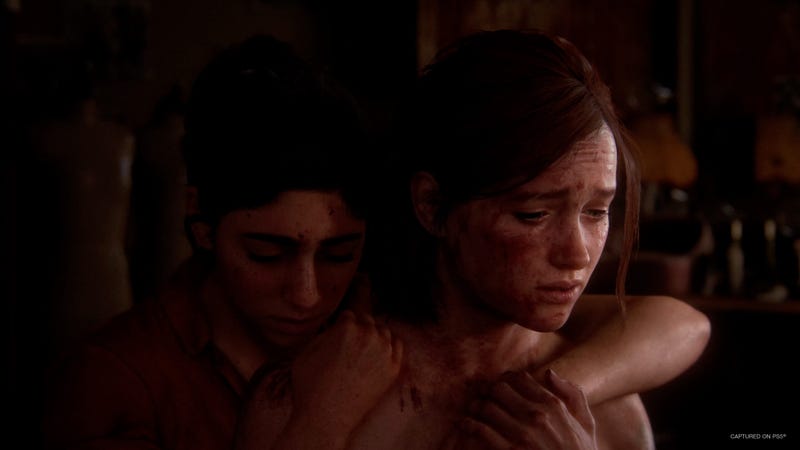
The Last of Us Part II was a pillar of 2020 Game of the Year discussions, even taking the title at that year’s Game Awards. But while the game’s victory lap seemed like a perfect opportunity for Sony to cool its jets and let the series fade into memory for a bit, it became clear that it would loom over video game industry discourse when it could have been slumbering. In 2021, a Bloomberg report revealed Naughty Dog was working on a PlayStation 5 remake of the original PlayStation 3 game, which was still readily playable, and for much cheaper, through the PlayStation 4 remaster. While the PS4 couldn’t run the original PS3 version, which helped justify that console’s port, that excuse doesn’t work here, so the prospect of a remake felt unnecessary both in terms of preserving the original game and as a use of Sony and Naughty Dog’s own resources.
By the time The Last of Us Part I was announced in June of 2022, many were rightfully sceptical of whether or not it was necessary. Meanwhile, Druckmann, Baker, and Johnson took the stage at Summer Game Fest to justify its existence, saying that The Last of Us has been so important to video games over the past decade, and so the team believed it was necessary to bring this definitive edition to a modern console. In the end, we got a very pretty version of the 2013 game that had only a few notable quality-of-life changes, the sort that would probably be most recognized by people who played the original extensively. But The Last of Us should be experienced by as many people as possible for $US70 because it’s a cultural moment, right?

Well, that cultural moment still hasn’t stopped, because HBO’s The Last of Us TV adaptation premiered at the beginning of 2023. The show is constantly at war with itself in terms of making sweeping changes and staying true to the original story, but by and large, it’s been well-received, is up for several end-of-year awards like the Emmys, and even improves upon the source material in some spots. But that show once again ensured that The Last of Us has been in the public consciousness for another year.
Even I, a long-time fan who has adored the story of Joel and Ellie from the beginning, am ready for a break. But by god, Sony and Naughty Dog are not content with millions of dollars, millions of fans, and heaps of cultural cache. We have to retread The Last of Us Part II in 2024, and while some fans are excited, there are a fair number of people responding to the announcement with exhaustion, claiming it’s too soon to remaster a game from 2020.
Why the timing feels so weird for a re-release of The Last of Us Part II
To the credit of everyone involved, The Last of Us Part II Remastered feels far less egregious than The Last of Us Part I felt last year. It’s got a $US10 upgrade path for those who already own the PlayStation 4 version, comes with a new mode, behind-the-scenes features, cut levels from the development process, and it has a collector’s edition with a pretty sick steelbook. So why does it still feel so tiresome to have The Last of Us Part II released again just under four years after its original launch? I think the problem is twofold: branding and fatigue.
Looking at other PS4 games in Sony’s portfolio that made the jump to PS5, The Last of Us Part II is hardly the one with the shortest journey between original release and pricey remaster. Sucker Punch’s samurai open-world game Ghost of Tsushima came to PS5 a year after its PS4 launch. Death Stranding had a two-year gap between launching on PS4 and coming to PS5. Both of these games have $US10 upgrade paths. So what’s the difference, especially if The Last of Us Part II Remastered is coming out much later after its initial launch? I think some of it comes down to calling it a “remaster” when Ghost of Tsushima and Death Stranding’s ports were labelled as Director’s Cuts.
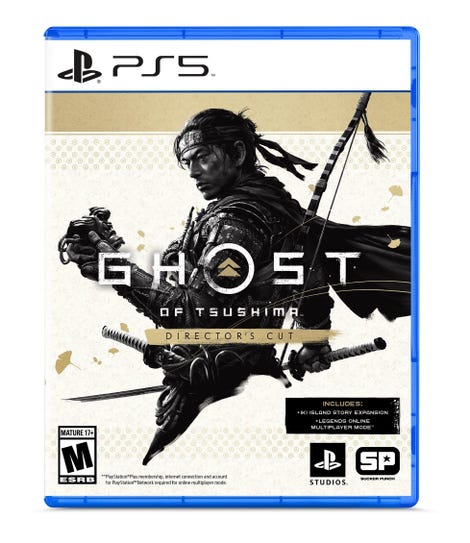
Remasters and remakes have become a prickly subject in recent years as they begin to feel less like a means for companies to ensure that old games remain playable as technology changes, and more like a way for them to simply repackage and sell old games. The Last of Us is a prime example of this, with The Last of Us Remastered coming out so soon after the original game and The Last of Us Part I striking many as unnecessary.
But this is a problem of the company’s own making. Consoles are intentionally built not to play old games, so companies like Sony and Nintendo (the latter of which has done heinous shit like making access to remasters a limited-time affair) have created a new demand they can supply. Calling something a Director’s Cut, however, suggests a creative impulse rather than a purely commercial one, the opportunity to introduce new material that the people behind the game wish could have been there from the beginning.
In theory, The Last of Us Part II’s new behind-the-scenes features, cut levels, and commentary, all imply what you’d typically expect of one of these. So when you slap the “remaster” branding onto a port that feels like it’s come along too soon, it carries more baggage than calling it, say, The Last of Us Part II Director’s Cut. Now, the remaster label implies a level of recognizable visual and technical touch-up that isn’t all that visible in the footage we’ve seen thus far. I don’t think this would change how some people feel about a PS5 release, but it does draw attention to how just the slightest framing change can alter public perception.
But calling it something like Director’s Cut or Definitive Edition wouldn’t change that Naughty Dog and Sony have been pushing The Last of Us non-stop for the past decade, and have done so with only two games to draw from. The original game was a cultural moment because it wasn’t a franchise yet, and while we were certainly being bombarded with zombie fiction via series like The Walking Dead, Naughty Dog’s take on the genre was fresh and felt like the kind of once-in-a-generation game that would shift the trajectory of what developers were making. The Last of Us has done that, but Sony’s insistence upon never letting us forget it has meant we have not been rid of the series in so long that it feels like Part II happened more recently than it actually did. Oh, and there’s supposed to be a multiplayer game at some point. Maybe.
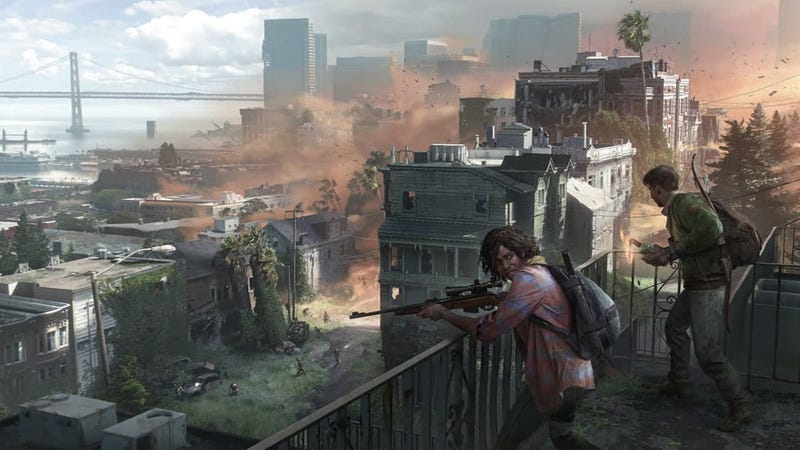
Despite its acclaim, The Last of Us is probably one of the most divisive franchises in this space. Plenty of people, myself included, consider the series one of their favorites of all time. But it’s often scornfully treated as emblematic of Sony’s shift to prestige at the expense of the smaller-scale, innovative games of PlayStation’s early years. Stories of its development cycle are cited as a case study of problems in AAA development like layoffs, crunch, pivots to photorealism, and notions of auteur theory, which has tainted the game in some people’s eyes. Even for fans, it’s sometimes hard to even talk about the game in public spaces because the “get woke, go broke” crowd has made certain discussions around the game exhausting. But The Last of Us Part II is especially fraught right now because of Druckmann’s public support for Israel in the ongoing conflict between it and Palestine, and his own admission that the game takes inspiration from this conflict. What The Last of Us Part II’s text actually has to say when viewed through that lens is a conversation for another day, but it does at the very least leave me feeling like maybe we don’t need to revisit this game right now.
Whether suits want to admit it or not, franchise fatigue is hitting all sides of popular culture. Despite The Marvels sounding like a pretty good One of Those, the latest MCU movie’s box office performance is proof that a series that once dominated the multiplex is losing its vice grip on the film industry. Sentiment around Call of Duty is at an all-time low after annual releases have been hitting us for almost 20 years. The Last of Us may be on top of the world right now, but it is not immune to the same hubris as any other big franchise. Though in this case, instead of the franchise expanding, it simply repeats itself and charges money for it.
The Last of Us Part II Remastered may sell well enough when it launches on January 19, but eventually, the diminishing returns will become clear, as they do for anything else that never gets a break. Games from the biggest franchises can only be the cultural event Sony wants The Last of Us to be if they spend enough time away to make people miss them, and right now I never feel like I’m without easy access to Joel and Ellie, as Sony keeps trying to deliver them to me with expedited shipping.
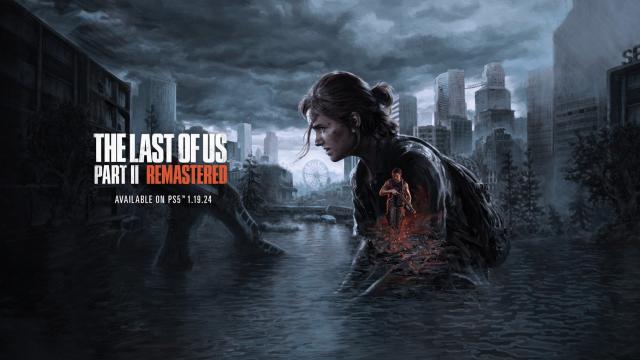
Leave a Reply